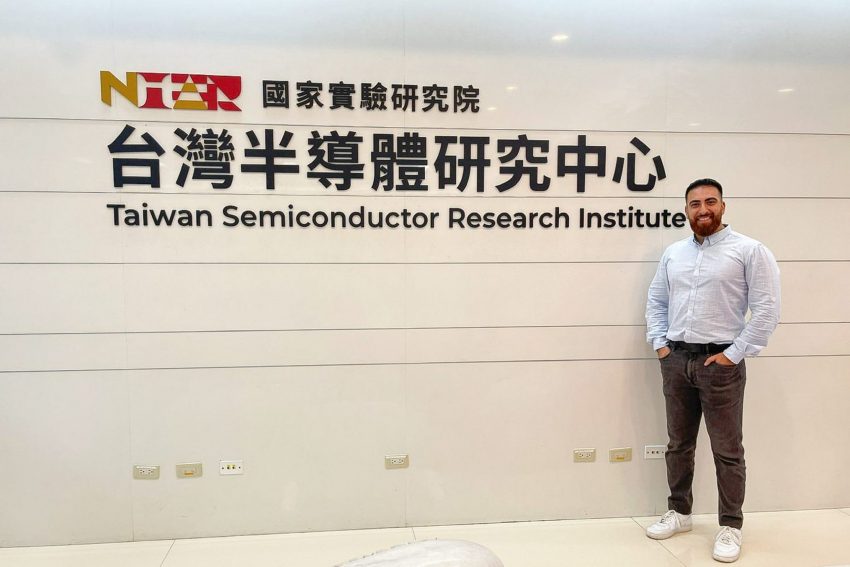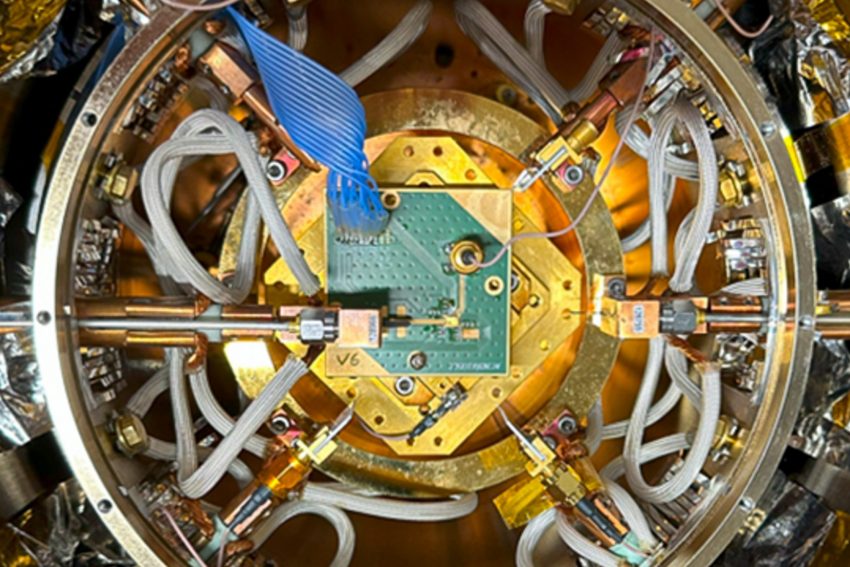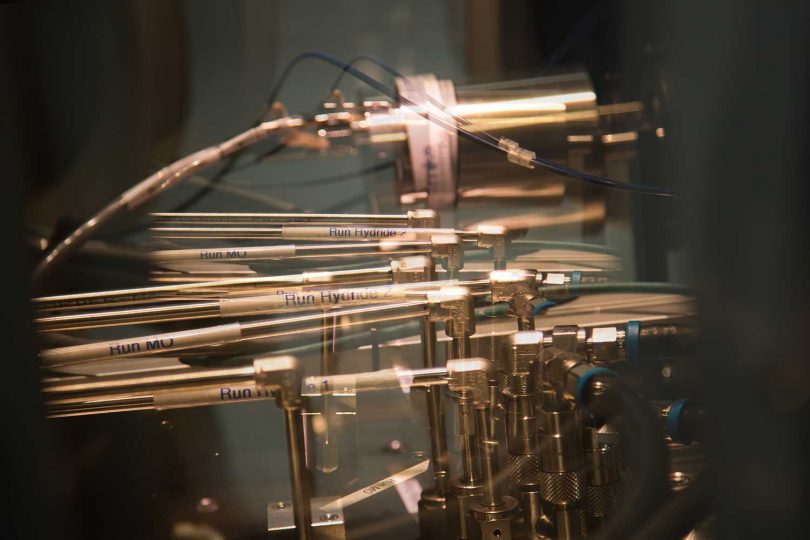These quantum dots connect Taiwan and Braunschweig Funding for quantum computer architecture
TU Braunschweig and the National Yang Ming Chiao Tung University (NYCU) in Taiwan will be conducting joint research on germanium quantum dots as the basis for quantum computers over the next three years. The first collaboration between the two universities will receive approximately €750,000 in funding from Taiwan and Germany. With the project name ‘CryoDot’, the researchers aim to significantly improve the demanding temperature conditions of the architecture.

Yazan Saad Aldrine, research assistant at the Institute for CMOS Design at TU Braunschweig, visiting Taiwan. Picture credit: CMOS Design/TU Braunschweig
Trapped atoms, light particles, diamond vacancies: there are many viable architectures for quantum computers. But the key question is not whether they work, but how scalable each approach is. Does the idea work not only for hundreds of qubits, but also for hundreds of thousands – or better still, millions of qubits? Qubits made of silicon quantum dots, which are essentially atomic clusters on a surface, have the advantage of being compatible with the latest microelectronics design (CMOS). At least the production of millions of quantum dots on a chip would be relatively straightforward. The fact that there is still no outstanding quantum dot computer is instead due to the challenging temperature conditions.
In order for silicon quantum dots to become quantum bits (qubits), they must be cooled to a few millikelvins, i.e. close to absolute zero. However, the qubits are read out at 4 Kelvin – a small jump from a human perspective, but a completely different temperature world for quantum phenomena. The Taiwanese-German cooperation is therefore focusing on a different material: germanium. Germanium quantum dots of the same size would be better shielded from sources of interference and could still operate with few errors even at 4 Kelvin. Not only that, they could even calculate faster than their silicon counterparts.
Complementary expertise for supercomputers

Whether the new chip design is suitable for quantum dots will be determined in cryogenic measuring stations. Here, the technology is cooled down close to absolute zero. Picture credits: CMOS Design/TU Braunschweig
The project partners are contributing their complementary expertise to this end. While the quantum dots themselves are being developed in Taiwan, Professor Vadim Issakov and his team at the Institute for CMOS Design in Braunschweig are creating central control elements for the qubits. The researchers at TU Braunschweig are also contributing their experience from the construction of the quantum computers in the Quantum Valley Lower Saxony (QVLS). Issakov: “Cryogenic circuit technology is something that many quantum computer architectures need. The central challenge here is not what the qubits are made of, but that the circuits deliver maximum performance at the lowest temperatures. In Braunschweig, we have made rapid progress in this area over the last four years and, for example, developed the first cryogenic high-frequency controls for ion traps.”
Over the next three years (until July 2028), the CryoDot team plans to venture even further beyond the cryogenic temperature range. The ambitious goal: to perform qubit operations even above 4 Kelvin, up to a maximum of 10 Kelvin. To this end, the project partners will receive the equivalent of approximately £130,000 from the Taiwanese National Science and Technology Council (NSTC) and around £540,000 from the German Federal Ministry of Research, Technology and Space (BFTR).


